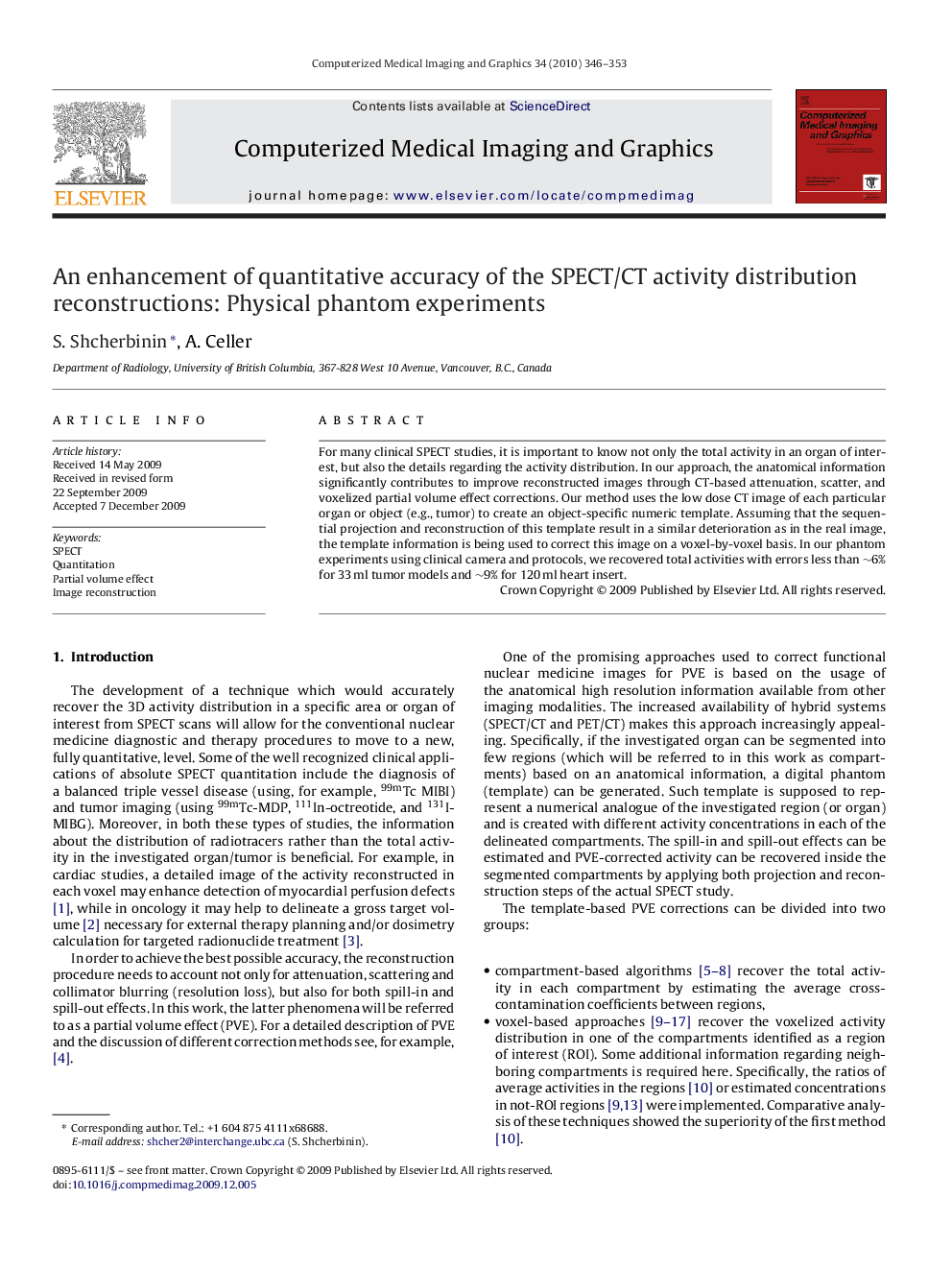| Article ID | Journal | Published Year | Pages | File Type |
|---|---|---|---|---|
| 504329 | Computerized Medical Imaging and Graphics | 2010 | 8 Pages |
For many clinical SPECT studies, it is important to know not only the total activity in an organ of interest, but also the details regarding the activity distribution. In our approach, the anatomical information significantly contributes to improve reconstructed images through CT-based attenuation, scatter, and voxelized partial volume effect corrections. Our method uses the low dose CT image of each particular organ or object (e.g., tumor) to create an object-specific numeric template. Assuming that the sequential projection and reconstruction of this template result in a similar deterioration as in the real image, the template information is being used to correct this image on a voxel-by-voxel basis. In our phantom experiments using clinical camera and protocols, we recovered total activities with errors less than ∼6% for 33 ml tumor models and ∼9% for 120 ml heart insert.
